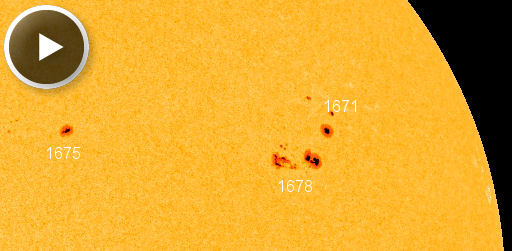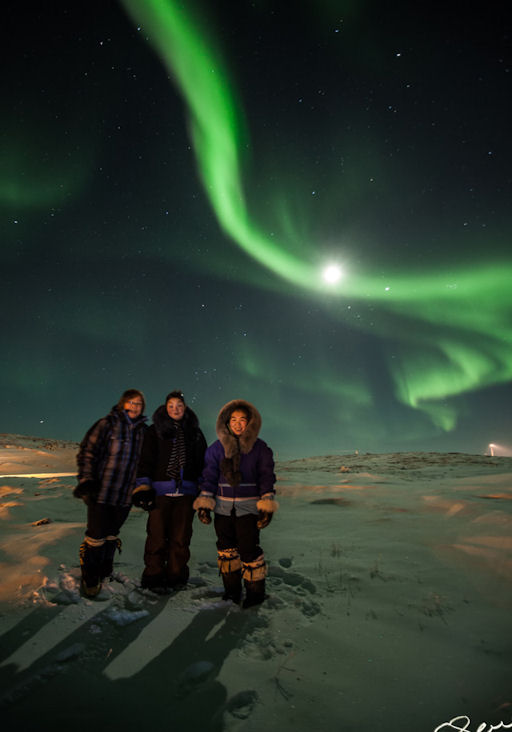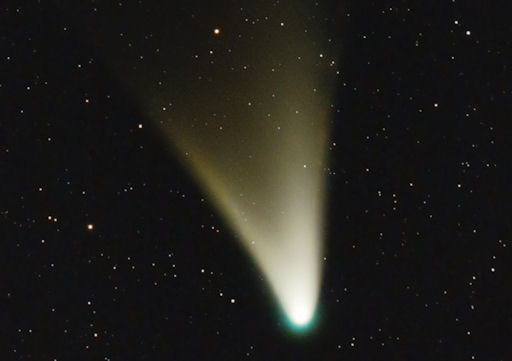Hang the Transit of Venus on your wall! Hubble-quality images from NASA's Solar Dynamics Observatory are now available as metallic posters in the Space Weather Store. | | |
CHANCE OF FLARES: New sunspot AR1678 has developed a delta-class magnetic field that harbors energy for strong explosions. NOAA forecasters estimate a 55% chance of M-flares and a 15% chance of X-flares during the next 24 hours. Solar flare alerts: text, voice.
FAST-GROWING SUNSPOT: At the beginning of this week, sunspot AR1678 didn't exist. Now it is five times wider than our entire planet. NASA Solar Dynamics Observatory recorded the sunspot's rapid emergence on Feb. 19-20:

Sunspots are islands of magnetism that float on the surface of the sun. This one is emerging from depth and changing at such a rapid pace that its magnetic field is likely unstable. A reconnection event in AR1678's magnetic canopy could lead to a significant solar flare. Stay tuned! Solar flare alerts: text, voice.
Realtime Space Weather Photo Gallery
AURORA WATCH: Despite low solar activity, February has been a good month for auroras, with some observers reporting weeks of nightly Northern Lights around the Arctic Circle. "There were great auroras yesterday night outside the little Inuit village of Ivujivik in Nunavik, Quebec," says Sylvain Serre, who photographed some of the onlookers:

Serre used a Canon EOS 5D digital camera set to 4000 ISO for the 3.2 second exposure. Other photographers should take note of those settings because more lights are in the offing. NOAA forecasters estimate a 40% chance of polar geomagnetic storms on Feb. 21 as a solar wind stream approaches our planet. Aurora alerts: text, voice.
Realtime Aurora Photo Gallery
COMET PAN-STARRS UPDATE: Comet Pan-STARRS (C/2011 L4), widely expected to become a naked-eye object in early March, is now closer to the sun than Venus. Solar heating is vaporizing the comet's icy core and creating a wide, fan-shaped tail visible through binoculars in the southern hemisphere. Ignacio Diaz Bobillo sends this picture from Buenos Aires, Argentina:

"I saw Comet Pan-STARRS just before daybreak in the constellation Grus," says Bobillo. "This is what it looked like through a small telescope, imaged with an exposure time of 8x2 minutes."
In early March, Comet Pan-STARRS will make its closest approach to the sun inside the orbit of Mercury; at that time it could brighten to easy naked-eye visibility. No one knows exactly what will happen, however, because it is a fresh comet being exposed to solar heating for the first time. Experts discuss the possibilities in this video from Science@NASA. More: 3D orbit, ephemeris, light curves, NASA story.
Realtime Comet Photo Gallery
Realtime Noctilucent Cloud Photo Gallery
[previous years: 2003, 2004, 2005, 2006, 2007, 2008, 2009, 2011]

